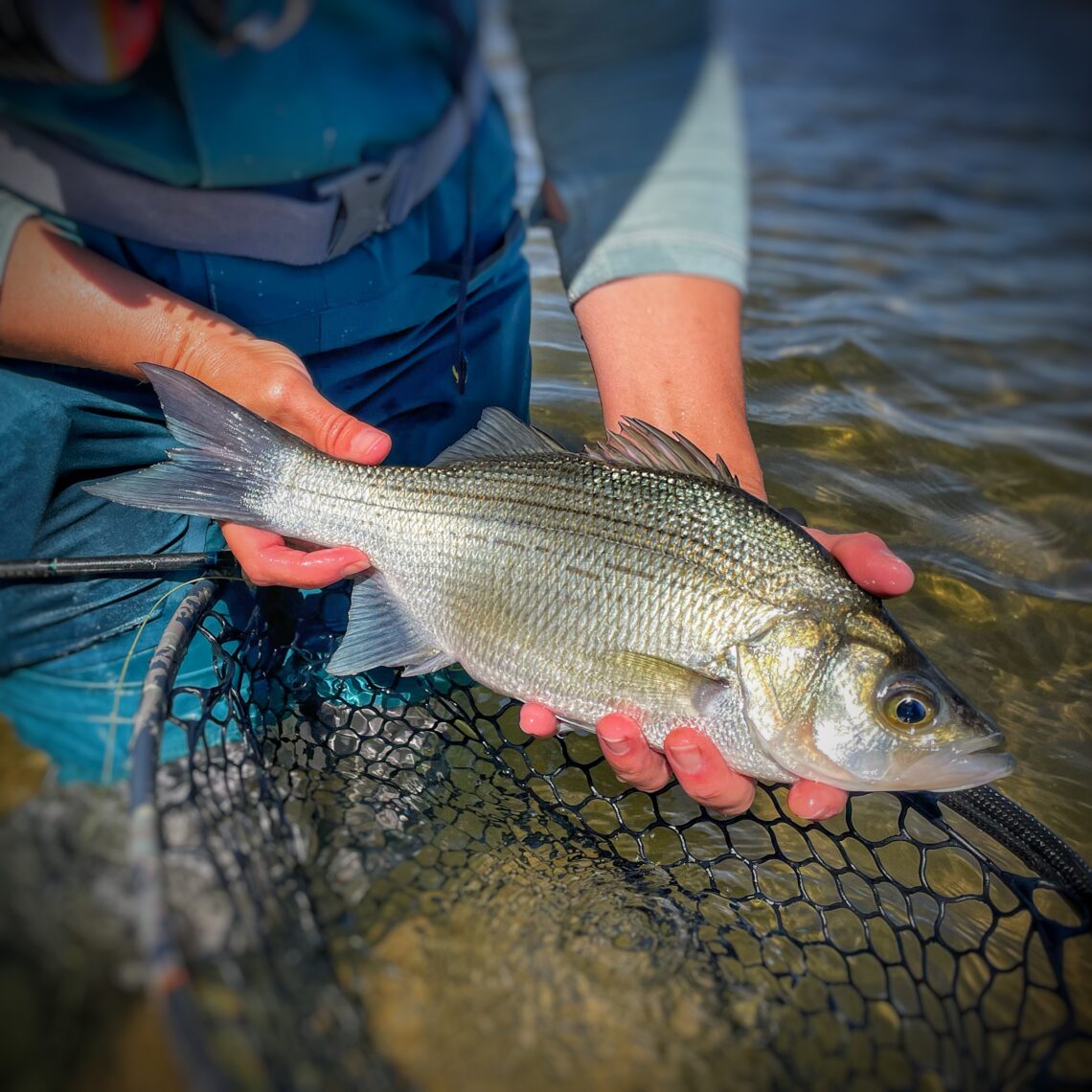I’ve had lots of questions about sinking lines since the White Bass have started running. Like, “Do I need a full sink or sink tip?” or, “Can I fish the floating line I already have?” The short answer is “yes,” but like lots of things in fly fishing, it’s a little more nuanced than that. But we like nuance, right? That’s one of the reasons we choose fly fishing over conventional tackle. So, I thought I would offer a bit of info and some options if you want to get into some “Sandies” without investing in a sinking line. Again, these are just some high-level suggestions/options for those that might want a little guidance about rigging for targeting White Bass on the fly.
For those with a 9 foot 4, 5, or 6wt who want to try chasing white bass. These fish primarily hang out and feed on or near the bottom, so it is important to get the flies down to the fish in the feeding zone. I prefer to use full sinking or sink tip line in this scenario. But for the novice and even intermediate angler, it can not only be tough to justify the expense of additional line and reel or spool, it can be confusing to know what sink rate to choose, and they are a bit more difficult to cast than floating lines. Here are some viable options that will help you get the flies down without the additional complexity/investment of a new line. I’ve arranged them in order from easy to ideal. Also keep in mind that these options can, in many cases, be used together to get down faster and/or stay down more effectively as you retrieve the fly.
- HEAVY FLIES. (no additional cost) The simplest way to get down is weighted flies…choose patterns with barbell eyes, for example.
- SPLIT SHOT. (less than $10) Add split shot about 12-14 inches ahead of your fly to help get it down faster. You can also slide a weighted cone on the tippet before tying on your lighter fly and just let it slide down.
- SINKING/POLY LEADERS: (about $10) Most of the major manufacturers make sinking leaders. I’d go with 1.5-3 Ips (inches per second) for water up to 4ft and 4-7ips for deeper or faster water.
- MICRO TIPS: ($$$) These are a relatively new option. The one I’m recommending for 9ft rods in the 4-6 wt range is the Sinking OPST Commando Micro Tip. These attach via loop-to-loop connection to your fly line on one end and your leader on the other, creating a sinking section between them (they can also be used with an intermediate sinking leader, if you like). It’s important to remember that “mass moves mass,” so you’ll be most successful casting these heavy tips if you have a line that is at least weight forward, and even better if it’s short-headed for streamers/poppers or if it’s heavier than AFFTA spec like some of the “creek” lines or lines like SA MPX, Orvis Bank Shot, etc.
OPTIONS
Please note, these are just a few options I am suggesting to help clarify what I’m talking about. There are other brands in most cases, and I have no attachment to these products nor do I benefit financially from you purchasing any of them.
SPIT SHOT:
Micro Split Shot (should cover most situations)
SINKING LEADERS:
AIRFLO BASS POLYLEADER (If using alone, choose fast or extra fast sink, in conjunction with a micro tip, use intermediate clear) Scientific Anglers also makes “Sonar” sinking leaders and Rio makes their “Versileader.”
SINKING MICRO TIPS
OPST Pure Skagit Commando Micro Tips 7.5 ft. (Choose either Riffle (S2), Run (S4), or Bucket (S6) that sink at 2, 4 or 6 Ips, respectively). The deeper the hole, the faster sink I would choose.
Oh, and one more thing. If you’re using a sinking line or tip, don’t waste your hard-earned cash on a tapered leader. Cut off 3 feet or so of 12lb tippet, tie a perfection loop to attach it to your line or tip loop, tie the other end to your fly with a nonslip loop and let’r rip!

